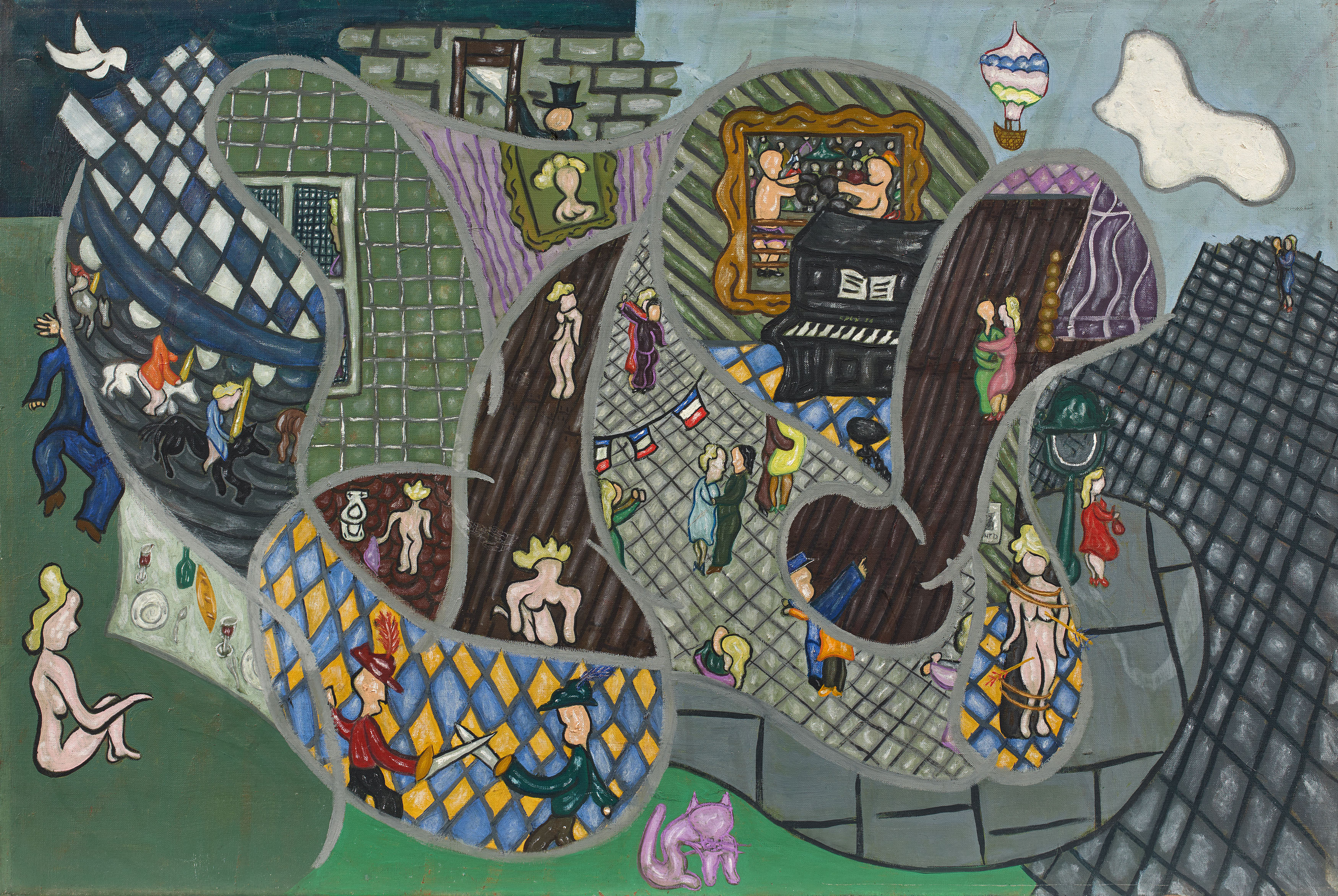COPLEY, WILLIAM NELSON
1919 New York - 1996 Key West
Title: Untitled.
Date: 1956.
Technique: Oil on canvas.
Measurement: 54 x 80,5cm.
Notation: Signed and dated in the centre of the piano: CPLY 56.
We thank Mr. Anthony Atlas, William N. Copley Estate, New York, for the kind, scientific support.
Provenance:
- Collection Roberto und Sonali Dasgupta Rossellini, Rom (since ca. 1960)
- Collection Kasper König, Berlin (since ca. 1997)
Exhibitions:
- Galerie 1900-2000, Paris 1988
- Aargauer Kunsthaus, Aarau 2000 (label verso)
Literature:
- Exhib. cat., William N. Copley: CPLY, Galerie 1900-2000, Paris, ill
Copley in Paris
The work " Ohne Titel" (Untitled) from 1956 can be placed in William N. Copley's time in Paris between 1951 and 1962, when he was strongly inspired by the surrealist pictorial language of the French. The theme at hand is liberation from political oppression, social norms and regulations. Copley summarizes his definitions and associations of freedom in the form of a kind of thought bubble made up of individual sections. This collage-inspired reflection on certain themes, in which memory, expectations and art-historical references are created, is a recurring motif in Copley's work during his time in France. The individual bubbles often move within a frame in the form of an automobile, which for Copley is a symbol of dynamism, both spatially and temporally. Although not directly depicted, this is echoed in the present example from 1956 in the form of the roads that wind around the thought structure.
Art historical references
Dance and fairground scenes, allusions to music and sports culture as well as traditions of the Christian religion and art history are clearly separated from each other by a clear subdivision. The French Wars of Liberation, such as the French Revolution (1789-1799) and the end of the Second World War, are also interwoven through the guillotine above and the French flags in the center of the picture. Art historical references can also be clearly identified in the painting. Copley quotes Édouard Manet's work "Le Déjeuner sur l'herbe" (1863), which marked a radical change in the stylistic reception of art. In the center left, "Les raboteurs de parquet" by Gustave Caillebotte from 1875 is depicted. Both works became part of the discourse of the time due to their presentation of nudity in everyday scenes. As can be seen in the examples "Reclining Nude" (lot 12) and "Happy Birthday" (lot 14), Copley repeatedly devoted himself to the subject of sexual liberation in his works.

